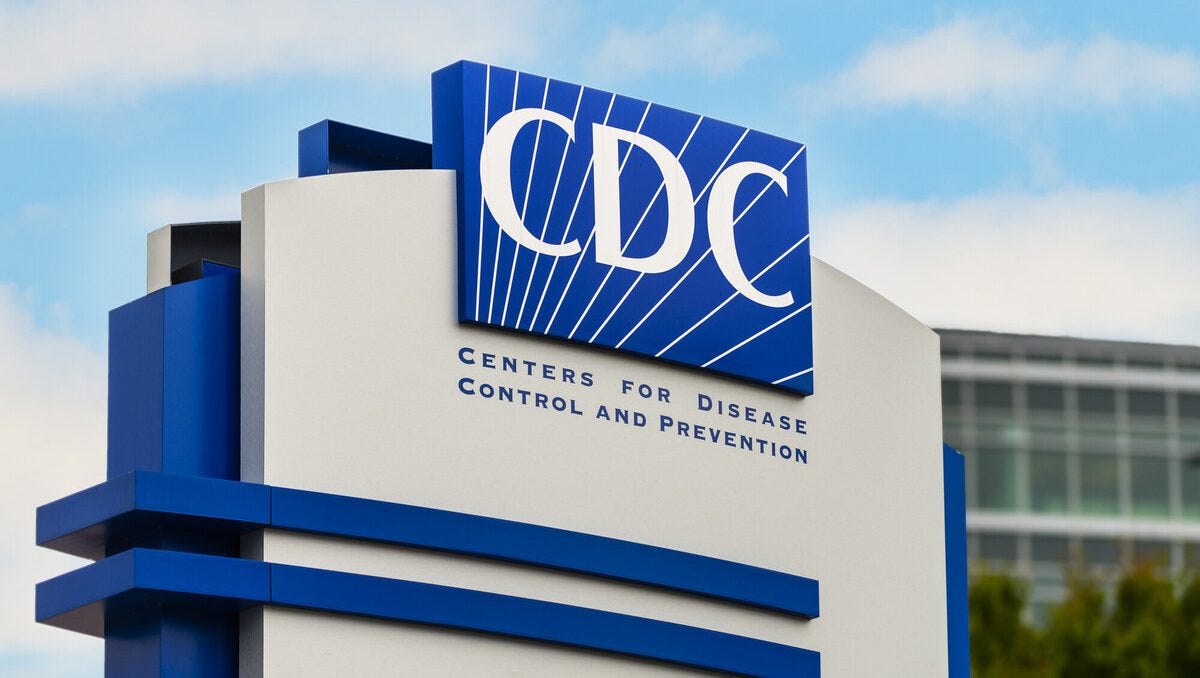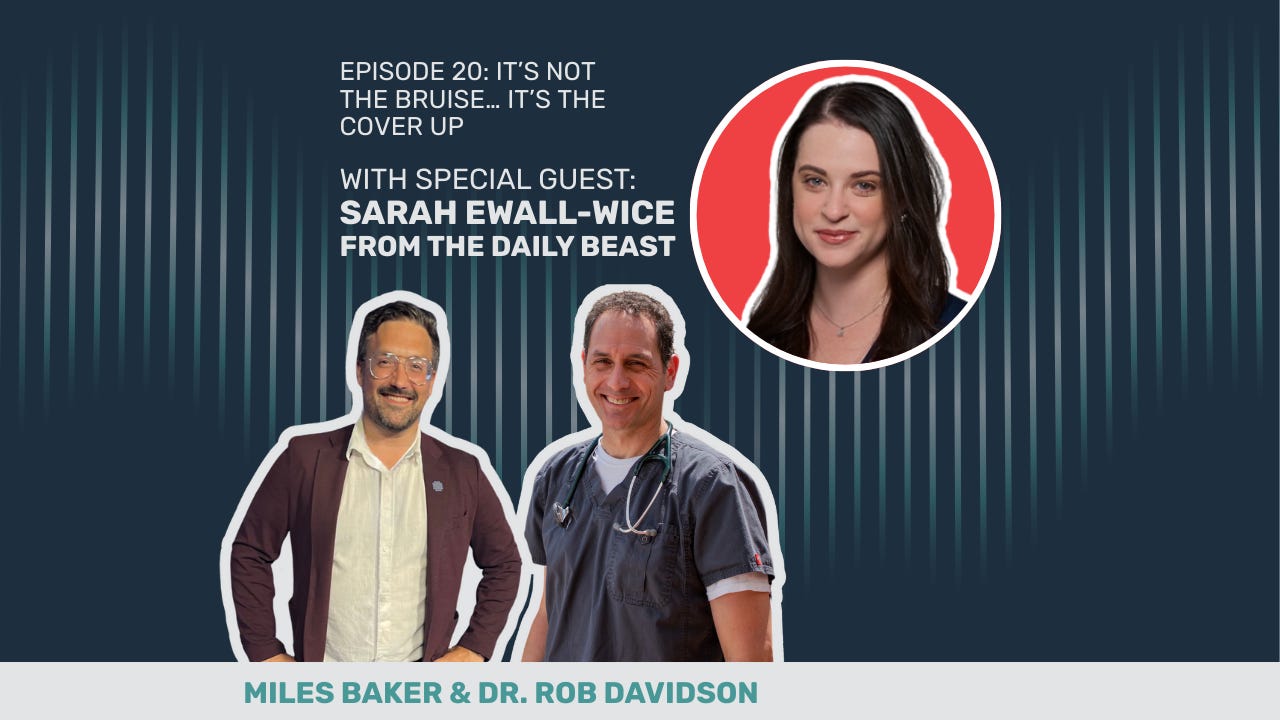The Week Public Health Collapsed: Inside the CDC’s Sudden Implosion
When politics trumps science, patients pay the price. The CDC’s implosion shows just how high the stakes are.
It’s not often that one week changes the trajectory of American public health. But what happened in late August may well go down as one of the most pivotal — and devastating — moments in the history of medicine, policy, and trust in science. The Centers for Disease Control and Prevention, long regarded as the nation’s premier public health agency and a cornerstone of global disease surveillance, effectively collapsed in real time.
On paper, the CDC still exists. Its website is live. Its sprawling bureaucracy technically remains. But after the resignation and firing of top leadership, including Director Susan Monarez, and several of the agency’s most senior scientists, what’s left is a hollow shell — and one that appears increasingly under the control of political operatives rather than doctors and scientists.
This is the story of how we got here, what it means for Americans and the world, and why this week may be remembered as the moment U.S. public health went dark.
Want more? Tune into Episode 20 of Paging America, where Dr. Rob talks more about the CDC news. Listen here.
A Sudden Wave of Resignations
The week began with whispers: reports that several key CDC officials had resigned. Jennifer Layden, who had led the Office of Public Health Data Surveillance and Technology, was gone. Daniel Jernigan, head of the Center for Emerging Zoonotic Infectious Diseases — the division responsible for monitoring diseases that jump from animals to humans — was out. Debra Houry, the CDC’s chief medical officer, resigned as well. Each of these roles is critical, and their simultaneous exit raised alarms.
Then came the bombshell. News broke that Susan Monarez, the CDC Director confirmed by the Senate just weeks ago, had resigned. Within hours, her attorney issued a denial: she had neither resigned nor been fired. But the Trump administration announced shortly after that Monarez had in fact been dismissed. It was, in effect, a political execution.
Within 24 hours, the CDC’s top leadership team was gutted. The message was clear: those who stand against the administration’s line — or even just insist on scientific integrity — will be replaced.
The Shadow of RFK Jr.
To understand what’s happening, you have to look at the shadow looming over the entire public health apparatus: Robert F. Kennedy Jr.
RFK Jr., whose career has been built on anti-vaccine activism and Make America Healthy Again conspiracy theories, has now ascended to a position of extraordinary power in the Trump administration’s public health policy. The FDA’s rollback of COVID-19 vaccine access for most adults under 65 and pregnant women bore his fingerprints. And now, with the CDC effectively headless, his influence is expanding.
It’s not just about COVID vaccines. The abrupt removal of experts in zoonotic diseases undermines our ability to prepare for the next pandemic. The departure of leaders overseeing public health data weakens our capacity to track outbreaks. The sidelining of the chief medical officer leaves a void in decision-making at the highest level. What’s emerging in their place is a political echo chamber, where policy is dictated by loyalty to Trump and RFK Jr. rather than by evidence and science.
Why the CDC Matters
It’s easy to take the CDC for granted. For most Americans, its work is invisible. We don’t see the outbreaks that were stopped before they started. We don’t notice the diseases that never spread beyond a few cases because surveillance and response worked. Success in public health is measured in what doesn’t happen.
But when the CDC falters, the consequences are immediate and devastating.
Think back to the COVID-19 pandemic: despite the agency’s stumbles, it was CDC expertise, laboratories, and epidemiologists who guided the country through testing, vaccination, and containment. Globally, the CDC has played a central role in tracking flu strains, responding to Ebola outbreaks, and coordinating with the World Health Organization to stop disease at the source.
Without the CDC, the U.S. is flying blind. And when America can’t see, the world loses one of its most critical eyes on emerging health threats.
Intentional Sabotage
What makes this moment different from past crises is intent. Historically, public health failures in the U.S. have stemmed from neglect: underfunding, outdated infrastructure, and bureaucratic inertia. But today’s crisis is the result of deliberate sabotage. The Trump administration, emboldened by RFK Jr. and his MAHA allies, has set its sights on dismantling public health as an institution.
The reason is political. Science does not always align with ideology, and public health is inconvenient when it challenges the narrative. COVID-19 vaccines save lives, but they also symbolize government intervention. Disease surveillance requires transparency, but transparency can expose failures. When politics collides with science, science loses.
This isn’t mere dysfunction. It’s an authoritarian project: the politicization of everything, including the very systems meant to keep Americans alive.
The FDA’s Role
As the CDC imploded, the FDA quietly made its own seismic move. It restricted access to COVID-19 vaccines, allowing them only for people over 65, those with preexisting conditions, and children on a case-by-case basis. Most adults — including pregnant women — are effectively excluded. This decision runs directly counter to recommendations from leading medical organizations like the American College of Obstetricians and Gynecologists and the American Academy of Pediatrics.
The result? Millions of Americans who want protection against COVID will find themselves unable to get it. Hospitals and pharmacies, wary of running afoul of shifting rules, may refuse to carry the vaccines at all. It’s a chilling preview of how political interference can gut medical access.
And the ripple effects don’t stop there. Without CDC leadership, what happens when the next zoonotic threat emerges — an avian flu strain with the contagiousness of COVID but a far higher fatality rate? What happens when state health departments, underfunded and overstretched, are left to fend for themselves? The vacuum left by the CDC’s collapse will be measured not just in uncertainty, but in lives lost.
Brave Voices, Fading Hope
In the midst of this chaos, some officials have spoken out. Former CDC director Susan Monarez publicly condemned the politicization of public health before her dismissal. Dr. Dimitre Daskalakis resigned with a fiery statement decrying the use of CDC as a tool for political propaganda. Their words matter — they may inspire others to resist — but their departures also highlight the cost of courage. As people with experience leave, what remains is increasingly the domain of opportunists and loyalists.
The loss of expertise is catastrophic. The loss of trust is worse.
What Comes Next
Where does this leave us? In uncharted territory. The CDC’s collapse is more than a staffing crisis; it’s a dismantling of the infrastructure that has protected Americans for generations. It signals to the world that the U.S. no longer values science in its most critical institutions. And it leaves ordinary people vulnerable to threats they can neither see nor control.
But there is still a path forward. Congress could investigate. State health departments could step up. Physicians, nurses, and public health workers can continue to speak out, even at personal risk. And voters, ultimately, can hold leaders accountable.
For now, though, we are living in a world where America’s top public health agency has been gutted in a few days. The CDC is no longer the CDC we knew. And unless this tide is reversed, the costs will be counted not just in headlines and hearings — but in human lives.
Want more? Tune into Episode 20 of Paging America, where Dr. Rob talks more about the CDC news. Listen here.





